Product launches represent a challenge for retailers in spotting the truly lucrative new lines from also-rans and short lived fickle successes says Future Positive
If you see a bandwagon, it's too late," Sir James Goldsmith once advised. This remains sound advice in the sense that truly innovative products have a tendency to be more successful than line extensions or me-too' products, and that being first to market tends to generate lasting advantage*.
To maximise the opportunity presented by such potential abundance which is never guaranteed, of course there is a dependency on the new product development process delivering the right product to market at the right time and to minimise the opportunity for competitors to deliver a superior product at a later date*.
In the UK, around 3,000 new products are launched into the fast moving consumer goods arena every year in essence an almost endless succession of proverbial bandwagons.
It is a startling statistic that around 90% of new products fail within the first two years of their launch*.
Pause just briefly to consider the resource levels required to deliver new products to the marketplace successfully against this backdrop of such a relatively short life cycle it is somewhat sobering.
Occasionally, however, a product is launched which is so successful and perhaps this makes all of the collective NPD effort worthwhile that it creates a new category and a springboard for future growth.
The strategy in this case for those unfortunate enough not to be first to market and this is where Sir James' advice is at least worth reviewing is likely to be based on jumping on to the ensuing bandwagon before it has gathered too much momentum.
Such rare opportunities are a boon for consumers, who will have better products available and a wider choice to fulfill their demand, as well as for manufacturers and retailers who will see returns in the shape of higher sales and profits.
In terms of impulse markets, perhaps the confectionery sector within ice cream provides one of the best recent examples of a category being created on the singular success of a new launch.
Originally pioneered by Mars, now over a decade ago, it created an umbrella brand, heavily leveraging all of its existing brand strength and equity to effectively cross from its traditional realm of confectionery into ice cream.
Today, all of the major confectionery manufacturers have ice cream variants of their key brands, and the sector is worth over £11m annually within the independent trade sector, accounting for 9% of a total market worth around £129m.
In overall terms, the hand held ice cream market is showing a flat performance in year-on-year terms, but new products continue to be launched.
However, the number of casualties, those who have reached the end of their product lifecycle, is currently in the ascendant.
Overall, looking at data for the independent sector (covering the latest year to the week ending June 17 2000), the market is showing a net loss in terms of the number of brands available (it should be noted that this analysis does not include line extensions, which would significantly add to the overall numbers, but is focused on genuinely new entrants and casualties). This decline is driven by the children's sector despite six new launches, though it is perhaps not too surprising given that the sector is, to some extent, characterised by merchandising based on the popularity of the latest films or cartoons, and the product lifecycle can therefore be as fickle as fashion.
By comparison, the rest of the market is relatively flat, but the cones sector is one that positively stands out with five new launches. In terms of sector performance, these new launches seem to be helping to drive a renaissance.
The cones sector is currently growing at 17% in year-on-year terms, ostensibly shoring up the market since the majority of the other sectors are in decline.
Once again, umbrella brands are the key focus of this launch activity with Flake, Picnic and Cadbury's Fruit & Nut all launched in cone version recently, while in other sectors of the market Smarties and Cadbury's Dairy Milk have also launched variants.
New launch activity rarely automatically leads to overall market growth in fact the majority of new launches, particularly in mature markets, will tend to cannibalise sales from existing products within the market, or, indeed, from other closely related markets that are competing for a finite consumer spend.
It is perfectly possible to surmise, for instance, that the cones sector is merely growing at the expense of all the other sectors within the market.
Which really brings us back full circle: it is the rare, truly innovative product that will tend to win despite the bandwagon that is sure to be closely following. The lottery is that one is never quite sure where such products are going to emerge from something to keep suppliers and retailers alike on their toes!
The key challenge for independent retailers, in particular, is to identify, from the 3,000 or so opportunities presented each year, the new product winners from the also-rans.
Store and shelf space will genuinely limit the number of opportunities the independent retailer can take advantage of.
Add to that the seasonal nature of a lot of the key categories within the independent trade and it is easy to see how ranging and stock management can become major issues, particularly at times of peak consumer demand.
Inevitably, some retailers will find they have made the most of the opportunities presented to them by new launch activity, while others will not.
Perhaps the key question is really about how suppliers and independent retailers might work more closely together to more effectively deliver against consumer wants, while generating mutual benefit into the bargain!
* Source: New Product Introduction Successful Innovation/Failure: A Fragile Boundary by ACNielsen BASES and Ernst & Young, 1999
{{GROCER CLUB }}
Close menu
- Home
- Retail & Wholesale
-
Products & Suppliers
- Back to parent navigation item
- Products & Suppliers
-
Product Categories:
- Back to parent navigation item
- Product Categories:
- Alcoholic drinks
- Bakery
- Cereals & breakfast
- Cheese
- Chicken & poultry
- Chocolate
- Confectionery
- Crisps, nuts & snacks
- Dairy
- Fish
- Fresh produce
- Frozen
- Household
- Meat
- Own Label
- Sauces & condiments
- Seasonal
- Soft drinks
- Vaping
- Vegan & plant-based
- World foods
- Suppliers
- People
- Reports & Data
-
Topics A-Z
- Back to parent navigation item
- Topics A-Z
-
Popular topics:
- Back to parent navigation item
- Popular topics:
- Cost of living crisis
- Crime
- Deposit Return Schemes
- Finance
- Government & Regulation
- Health
- Inflation
- Loyalty
- Marketing
- Mergers & Acquisitions
- New Product Development
- Sourcing
- Supply chain
- Sustainability & environment
- Technology
- Ultra Processed Foods
- Vaping
- A-Z all topics
- Content by type:
- Events
- Ask iA (beta)
- Subscribe now
Sign in to comment on this article
Not logged in before? Register for FREE guest access today.
You will be able to:
- Read more stories
- Receive daily newsletters
- Comment on stories
Advert



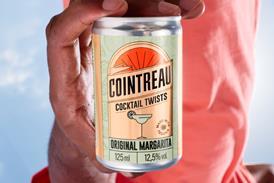
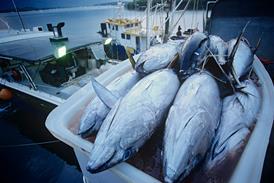

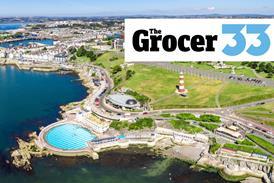





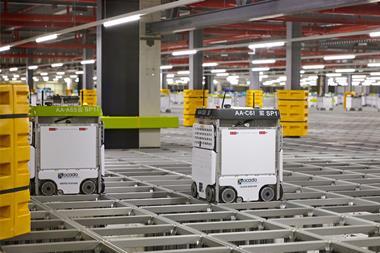



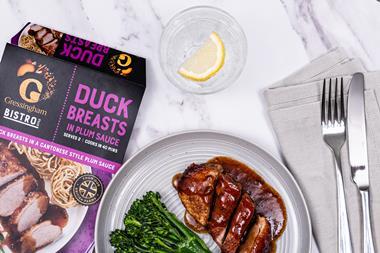
No comments yet